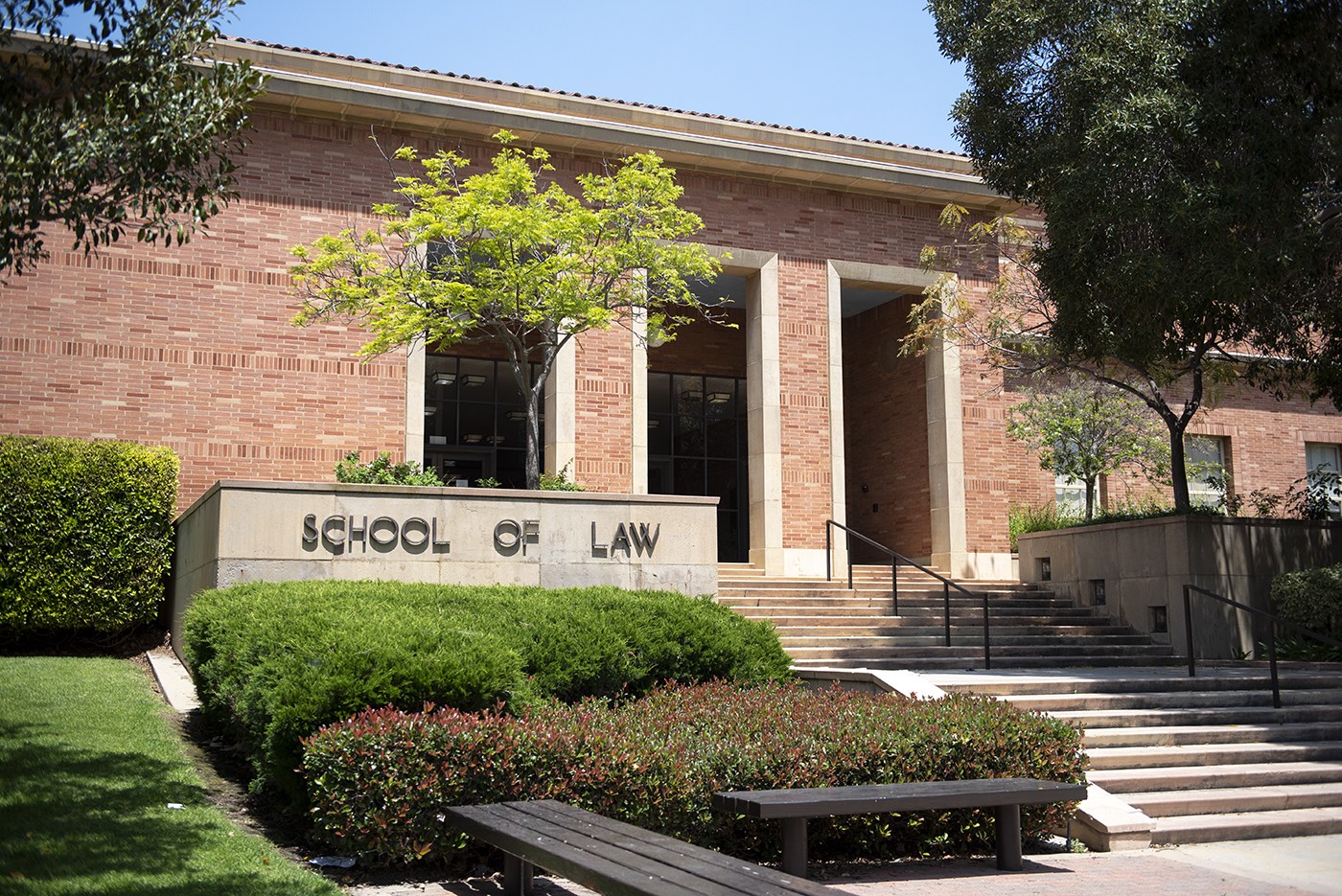UCLA report finds LBQ women overrepresented in foster care, carceral systems

The Williams Institute at the School of Law released a report in April about the disproportionate number of lesbian, bisexual and queer women in foster care and carceral systems. (Sakshi Joglekar/Assistant Photo editor)
By Alexis Duke
May 1, 2022 9:42 p.m.
Lesbian and bisexual girls and women, especially from Black and American Indian populations, are overrepresented in the foster care and carceral systems, UCLA researchers said.
The Williams Institute at the School of Law released a report in April that found that the proportion of lesbian, bisexual and queer girls and women is 3% higher in the foster care system, 24% higher in the juvenile detention system and 30% higher in the prison system than in the general population.
Lauren Bouton, a co-author of the report and a research data analyst at the Williams Institute, said the project aimed to uncover patterns often obscured by more general statistics. For example, the already small proportion of women in prisons can distract from the fact that women of color and LBQ women make up a large fraction of that population, they added.
According to the report, 89% of LBQ girls in the foster care system are women of color compared to 43% in the general population of LBQ girls. Moreover, the proportion of Black LBQ girls to non-Black LBQ girls is more than three times greater in the foster care system than in the general population. For American Indian girls, this proportion is five times higher, according to the report.
The report found similar relationships in the juvenile detention and prison systems for both women of color and Black women, in particular. The proportion of Black LBQ girls to non-Black LBQ girls in juvenile detention is two times larger than in the general population. In the prison system, 24% of LBQ women are black as opposed to 14% in the general population, according to the study.
The study authors decided to further look into Black and American Indian populations because of a history of race-specific discrimination and found even more disparities, said Bianca Wilson, a co-author of the report. Wilson added that although they weren’t able to obtain the data for American Indian women in carceral systems, other studies have confirmed that they are also overrepresented.
“American Indians, in particular, have a very specific experience of trauma and impact of white settler colonialism on the placement of children (in foster care) in the U.S.,” Wilson said.
Danielle King, the senior youth policy counsel at the National Center for Lesbian Rights, said one way to address inequities in the foster care and prison systems is for institutions and governments to provide more support for families, especially those struggling with issues such as domestic violence, mental health and substance abuse.
“Those communities need actual support and services, more resources. They need housing. They need better access to education systems, they need support for their families, I think, especially because of COVID-19.”
According to the study, possible contributing factors to why LBQ girls experience higher rates of displacement in the foster care system include sexual orientation-based discrimination and law enforcement disproportionately targeting girls of color.
In addition, the percentage of LBQ women of color who reported serious problems with the law is almost three times higher than that of white LBQ women, according to the same study.
The intersectionality of socioeconomic status and race in impacting the experiences of LBQ girls of color should not be understated, King said.
According to a Prison Policy Initiative study, 18% of incarcerated people surveyed were in foster care before the age of 18, 42% were a part of families receiving public assistance before the age of 18, and 68% were arrested once before the age of 19.
Wilson said although intersectionality is important in evaluating a potential foster-care-to-prison pipeline, she thinks this linkage should be further researched to better understand the experiences of girls and women of color within these systems. These statistics may signal a connection between the foster care and carceral systems but wasn’t something the study focused on, Wilson added.
“What are the barriers to ending up in permanent homes?” she said. “Or being released with shorter sentences? What’s happening within the systems that are impacting sexual minority girls, particularly girls of color?”
Doing research and publicizing data on LBQ girls’ experiences is a good first step to making a change, Bouton said.
“I think as people learn about this, you can’t disregard it,” they said. “You know it now, so maybe some changes will happen or more research will be done so that we can get to the point where we know what changes can be made.”

